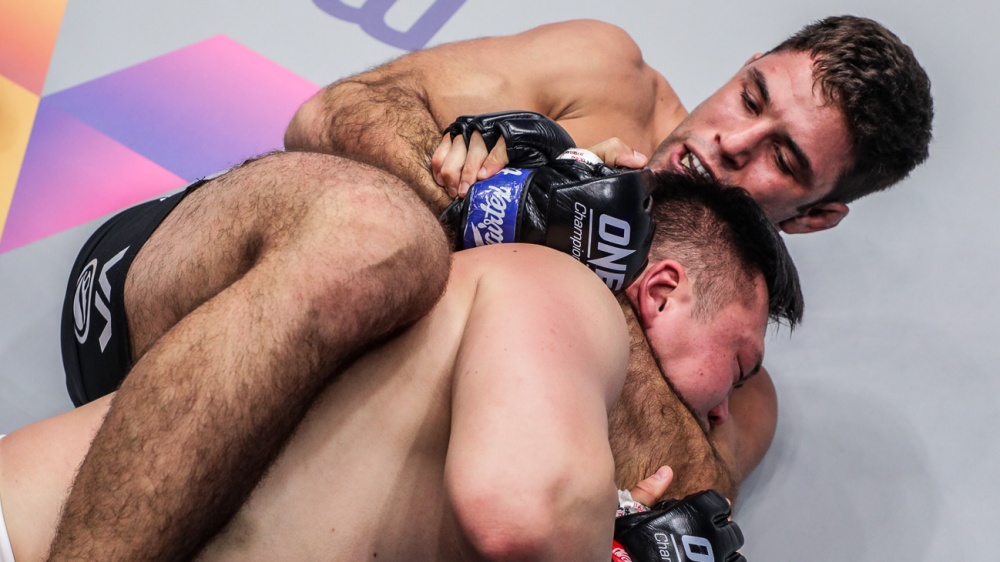submissions in grappling
In grappling, a submission is a technique used to force an opponent to tap out, signifying defeat.
Submissions are typically joint locks or chokeholds that apply pressure to the opponent’s joints or neck, causing pain and potentially injury if the opponent does not tap out. In grappling sports such as judo, Brazilian jiu-jitsu, and wrestling, submissions are an important part of the competition.
The goal is often to submit the opponent using a variety of different techniques, or to defend against submissions attempted by the opponent.
Below are some of the most common submissions in grappling.
Arm bar

An armbar is a submission hold in martial arts and wrestling that is used to force an opponent to submit (tap out). It is performed by placing the opponent’s arm in a position where it is extended and hyper-extended, which puts pressure on the elbow joint and can cause pain.
The hold can be applied from various positions, such as on the ground or in a standing position, and can be used in a variety of martial arts styles such as Brazilian Jiu-Jitsu, judo, and mixed martial arts (MMA). The armbar is often used as a finishing move to end a fight, and is also used in self-defense situations.
Rear naked choke
The rear naked choke (also known as the “rear naked chokehold,” “back mount,” or simply “the choke”) is a chokehold in martial arts and wrestling applied from an opponent’s back. The hold is performed by placing the arm around the opponent’s neck and gripping the bicep of that arm with the other hand. The hold is also referred to as a “two-handed choke” or “blood choke,” as it restricts blood flow to the brain.
To apply the rear naked choke, the attacker first secures a position behind the opponent, typically by having the opponent bend forward. The attacker then wraps one arm around the opponent’s neck, with the elbow of that arm pressing against one side of the neck and the attacker’s hand on the opposite side.
The attacker then grabs his own bicep with the other hand to secure the hold. The attacker can choose to grip the bicep with the palm facing up or down, depending on which variation of the hold he is attempting to apply.
There are several variations of the rear naked choke, including the “standing rear naked choke,” “body triangle rear naked choke,” and “rolling rear naked choke.” The standing rear naked choke is performed from a standing position, while the body triangle rear naked choke involves the attacker trapping the opponent’s body with his legs.
The rolling rear naked choke involves the attacker rolling his body onto the opponent’s back, trapping the opponent’s head between his own legs and applying the choke.
The rear naked choke is a very effective submission hold, as it can cause unconsciousness in a matter of seconds if applied correctly. It is also relatively easy to apply, making it a popular choice for grapplers of all levels. However, it is important to note that the choke can also be very dangerous, as it can cause serious injury or even death if applied with too much force or for too long.
Triangle choke
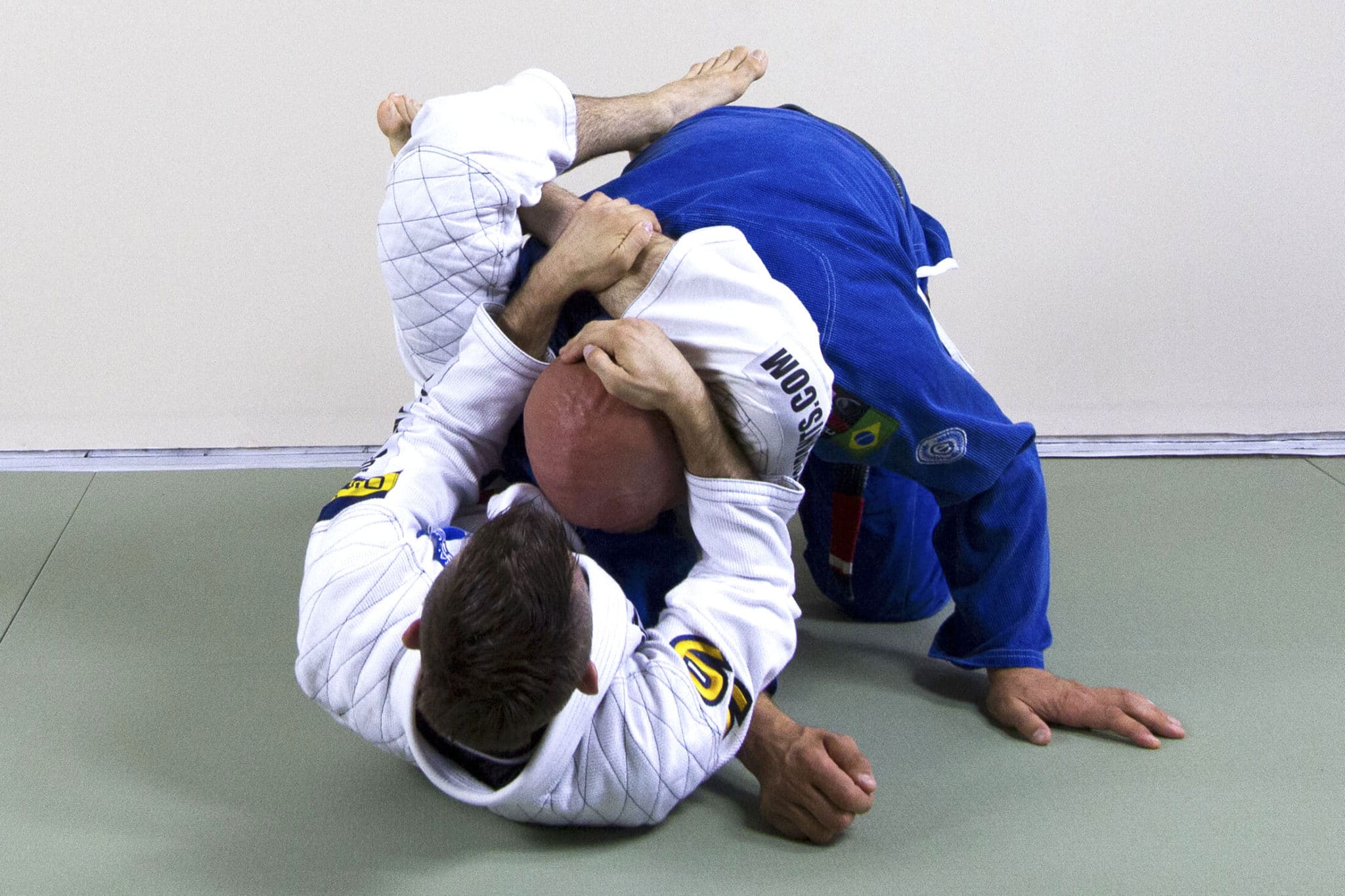
A triangle choke is a submission hold in grappling that involves trapping an opponent’s arm and neck between the legs in a triangular shape. It is a common submission hold in martial arts such as Brazilian Jiu-Jitsu, judo, and mixed martial arts (MMA).
To set up a triangle choke, the attacker begins by sitting on the ground with his legs extended. The attacker then wraps one leg around the opponent’s neck and traps the opponent’s arm between the attacker’s other leg and the inside of his own thigh. The attacker then grips his own ankle with one hand, pulling the trapped leg tight against the opponent’s neck and shoulder.
To finish the triangle choke, the attacker can either squeeze his legs together to apply pressure on the opponent’s neck and arm, or he can use his free hand to apply additional pressure on the opponent’s neck or head. The triangle choke can be finished from a variety of positions, including guard, side control, and mount.
The triangle choke is a very effective submission hold, as it can cause the opponent to tap out (submit) or lose consciousness due to the restriction of blood flow to the brain. It is also relatively easy to set up, especially from the guard position. However, the triangle choke can be difficult to finish against larger and stronger opponents, as they may have the strength to resist the squeeze of the attacker’s legs.
Heel hook
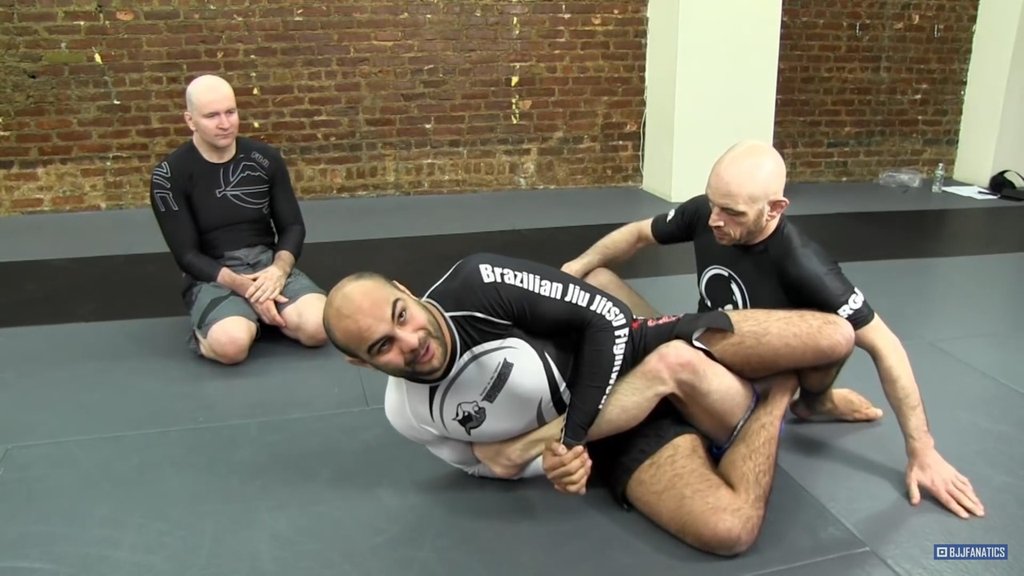
A heel hook is a submission hold in grappling that involves twisting and manipulating an opponent’s ankle and lower leg. It is a common submission hold in martial arts such as Brazilian Jiu-Jitsu, judo, and mixed martial arts (MMA), but it is generally considered a high-risk technique due to the potential for serious injury to the ankle and knee.
To set up a heel hook, the attacker begins by securing a position on the ground where he has control over the opponent’s lower leg. This can be done from a variety of positions, including guard, side control, and mount. The attacker then wraps his leg around the opponent’s lower leg, with his heel facing upwards. The attacker then grasps the opponent’s heel with his hand, pulling it towards his own hip.
To finish the heel hook, the attacker begins to twist and rotate the opponent’s ankle and lower leg in a circular motion, using his hand and his own leg to apply pressure. The goal is to apply enough pressure to cause the opponent to tap out (submit) or lose consciousness due to the pain.
The heel hook is a very effective submission hold, but it is also very risky due to the potential for serious injury to the ankle and knee. For this reason, the heel hook is illegal in many martial arts competitions, and it is generally not taught to beginners or practitioners who do not have a high level of skill and control.
Straight Foot lock
A straight foot lock (also known as an “ankle lock”) is a submission hold in grappling that involves applying pressure to the opponent’s ankle joint in order to force them to tap out (submit). It is a common submission hold in martial arts such as Brazilian Jiu-Jitsu, judo, and mixed martial arts (MMA), and it can be performed from a variety of positions, including guard, side control, and mount.
To set up a straight foot lock, the attacker begins by securing a position on the ground where he has control over the opponent’s lower leg. This can be done by wrapping the opponent’s leg with the attacker’s own legs, or by gripping the opponent’s ankle with the attacker’s hand. The attacker then grasps the opponent’s foot with both hands, pulling it towards his own body and applying pressure to the ankle joint.
To finish the straight foot lock, the attacker continues to apply pressure to the ankle joint, using his hands and his own body weight to increase the torque on the joint. The goal is to apply enough pressure to cause the opponent to tap out due to the pain.
The straight foot lock is a very effective submission hold, but it is also risky due to the potential for serious injury to the ankle joint. For this reason, it is important for practitioners to apply the hold with control and to release the hold as soon as the opponent taps out or the referee signals the end of the match.
Toe Hold
A toe hold is a submission hold in grappling that involves twisting and manipulating an opponent’s foot and lower leg. It is a common submission hold in martial arts such as Brazilian Jiu-Jitsu, judo, and mixed martial arts (MMA), and it can be performed from a variety of positions, including guard, side control, and mount.
To set up a toe hold, the attacker begins by securing a position on the ground where he has control over the opponent’s lower leg. This can be done by wrapping the opponent’s leg with the attacker’s own legs, or by gripping the opponent’s ankle with the attacker’s hand. The attacker then grasps the opponent’s foot with both hands, pulling it towards his own body and applying pressure to the ankle joint.
To finish the toe hold, the attacker continues to apply pressure to the ankle joint, using his hands and his own body weight to increase the torque on the joint. The goal is to apply enough pressure to cause the opponent to tap out (submit) due to the pain.
The toe hold is a less common submission hold than some other leg locks, such as the heel hook or the knee bar, but it can be effective in certain situations. As with any submission hold, it is important to apply the toe hold with control and to release the hold as soon as the opponent taps out or the referee signals the end of the match.
Arm in Guillotine
The arm in guillotine is a variant of the guillotine choke, a submission hold in grappling that involves trapping an opponent’s neck between the legs in a scissor-like grip. In the arm in guillotine, the attacker wraps one arm around the opponent’s neck and traps the opponent’s other arm between the attacker’s body and the trapped arm. The attacker then squeezes the opponent’s neck between the trapped arm and their own body, using the arm to apply pressure on the neck.
To finish the arm in guillotine, the attacker can either squeeze the trapped arm and their own body together to apply pressure on the opponent’s neck, or they can use their free hand to apply additional pressure on the opponent’s head. The arm in guillotine can be finished from a variety of positions, including guard, side control, and mount.
The arm in guillotine is a very effective submission hold, as it can cause the opponent to tap out (submit) or lose consciousness due to the restriction of blood flow to the brain. It is also relatively easy to set up, especially from the guard position. However, the arm in guillotine can be difficult to finish against larger and stronger opponents, as they may have the strength to resist the squeeze of the attacker’s arm and body.
Guillotine
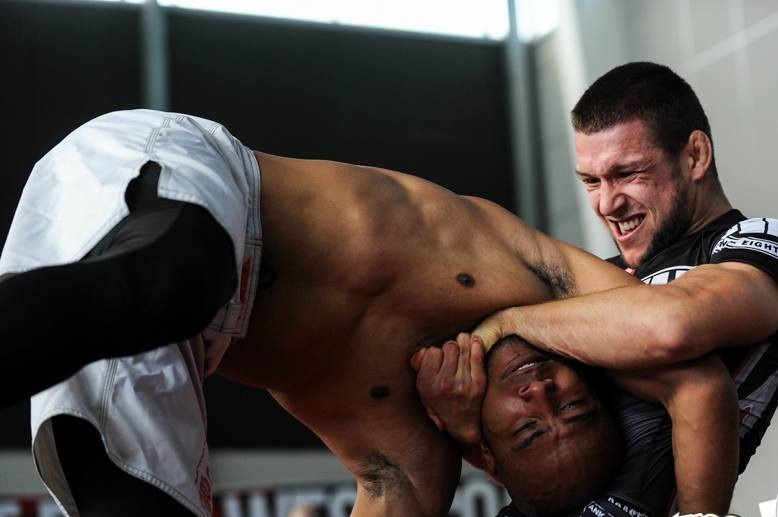
The high elbow guillotine (also known as the “tight guillotine” or “high guillotine”) is a submission hold in Brazilian Jiu-Jitsu (BJJ) that involves trapping an opponent’s neck in a scissor-like grip, using the attacker’s elbow as the point of compression. It is a variation of the traditional guillotine choke and it is often used as a counter to attempts at taking the attacker’s back.
To set up the high elbow guillotine, the attacker begins by wrapping one arm around the opponent’s neck and trapping the opponent’s other arm between the attacker’s body and the trapped arm. The attacker then lifts their elbow high and tight against the opponent’s neck, using the elbow as the point of compression. The attacker can also use their free hand to apply additional pressure on the opponent’s head.
To finish the high elbow guillotine, the attacker can either squeeze the trapped arm and their own body together to apply pressure on the opponent’s neck, or they can use their free hand to apply additional pressure on the head. The high elbow guillotine can be finished from a variety of positions, including guard, side control, and mount.
Kneebar

A kneebar (also known as a “legbar” or “leglock”) is a submission hold in grappling that involves twisting and manipulating an opponent’s knee joint. It is a common submission hold in martial arts such as Brazilian Jiu-Jitsu, judo, and mixed martial arts (MMA), and it can be performed from a variety of positions, including guard, side control, and mount.
To set up a kneebar, the attacker begins by securing a position on the ground where he has control over the opponent’s lower leg. This can be done by wrapping the opponent’s leg with the attacker’s own legs, or by gripping the opponent’s ankle with the attacker’s hand. The attacker then grasps the opponent’s foot with both hands, pulling it towards his own body and applying pressure to the ankle joint.
To finish the kneebar, the attacker continues to apply pressure to the ankle joint, using his hands and his own body weight to increase the torque on the joint. The goal is to apply enough pressure to cause the opponent to tap out (submit) due to the pain.
The kneebar is a very effective submission hold, but it is also risky due to the potential for serious injury to the knee joint. For this reason, it is important for practitioners to apply the hold with control and to release the hold as soon as the opponent taps out or the referee signals the end of the match.
Gi Chokes
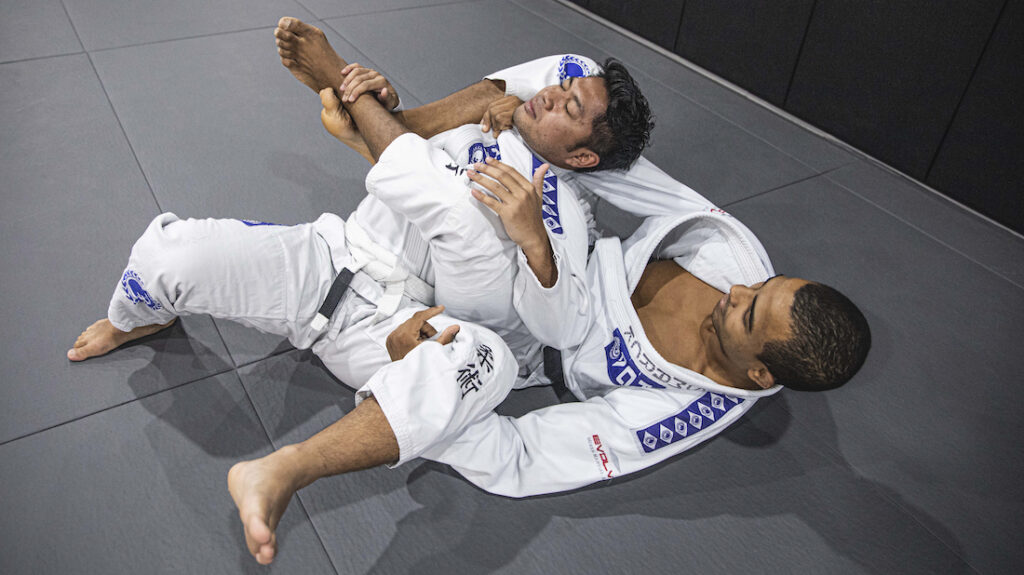
The lapel choke (also known as the “gi choke” or “cross choke”): This choke involves trapping the opponent’s neck with the attacker’s arm, using the lapel of the opponent’s gi to apply pressure. To set up the lapel choke, the attacker wraps his arm around the opponent’s neck and grabs the lapel of the opponent’s gi with his hand. The attacker then squeezes the lapel between his arm and his own body, using the lapel to apply pressure on the opponent’s neck.
The sleeve choke (also known as the “arm triangle” or “brabo choke”): This choke involves trapping the opponent’s head and arm between the attacker’s legs in a triangular shape, using the sleeves of the opponent’s gi to apply pressure. To set up the sleeve choke, the attacker wraps one leg around the opponent’s head and traps the opponent’s arm between the attacker’s other leg and the inside of his own thigh. The attacker then grips the sleeves of the opponent’s gi with his hands, pulling the sleeves tight against the opponent’s neck and shoulder.
The collar choke (also known as the “ezekiel choke”): This choke involves trapping the opponent’s neck with the attacker’s arm, using the collar of the opponent’s gi to apply pressure. To set up the collar choke, the attacker wraps his arm around the opponent’s neck and grabs the collar of the opponent’s gi with his hand. The attacker then squeezes the collar between his arm and his own body, using the collar to apply pressure on the opponent’s neck.
Gi chokes are very effective submission holds, as they can cause the opponent to tap out (submit) or lose consciousness due to the restriction of blood flow to the brain. However, it is important to note that gi chokes require the use of a gi (a martial arts uniform made of heavy fabric), and they may not be as effective without one.
Join Now
Send us a message and we’ll get back to you, or call us directly on 07932502332

